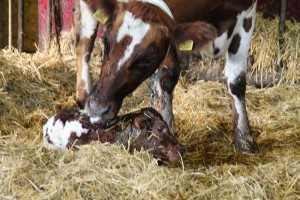Calving Tips
go.ncsu.edu/readext?422958
en Español / em Português
El inglés es el idioma de control de esta página. En la medida en que haya algún conflicto entre la traducción al inglés y la traducción, el inglés prevalece.
Al hacer clic en el enlace de traducción se activa un servicio de traducción gratuito para convertir la página al español. Al igual que con cualquier traducción por Internet, la conversión no es sensible al contexto y puede que no traduzca el texto en su significado original. NC State Extension no garantiza la exactitud del texto traducido. Por favor, tenga en cuenta que algunas aplicaciones y/o servicios pueden no funcionar como se espera cuando se traducen.
Português
Inglês é o idioma de controle desta página. Na medida que haja algum conflito entre o texto original em Inglês e a tradução, o Inglês prevalece.
Ao clicar no link de tradução, um serviço gratuito de tradução será ativado para converter a página para o Português. Como em qualquer tradução pela internet, a conversão não é sensivel ao contexto e pode não ocorrer a tradução para o significado orginal. O serviço de Extensão da Carolina do Norte (NC State Extension) não garante a exatidão do texto traduzido. Por favor, observe que algumas funções ou serviços podem não funcionar como esperado após a tradução.
English
English is the controlling language of this page. To the extent there is any conflict between the English text and the translation, English controls.
Clicking on the translation link activates a free translation service to convert the page to Spanish. As with any Internet translation, the conversion is not context-sensitive and may not translate the text to its original meaning. NC State Extension does not guarantee the accuracy of the translated text. Please note that some applications and/or services may not function as expected when translated.
Collapse ▲Calving time is when the rubber hits the road in the cow business. After all, without a live – and thrifty – calf, all the anticipated payoff of expenditures in genetics, cow health, facilities, feed, labor, etc., are just wasted dollars. As many producers start their fall calving season, there are several tips to be mindful of to ensure the next calf crop can safely be on the ground. For some, this time of the year is just “another day at the office,” because they have taken the necessary steps to ensure as few problems as possible. For others, I hope this article will help reduce some of the problems they might incur. The first four items on my top 10 list have to be done the previous year to ensure a successful calving season. As we strive to improve the beef operation over time, it’s never too early to be thinking about the next calving season.
Use light birth weight (BW) bulls with appropriate BW and calving ease expected progeny differences (EPDs) for replacement heifers. Granted, you might say it’s too late to worry about that now. To that I say, “yes and no!” Yes, it’s too late for this upcoming calving season, but the spring bull sales are just around the corner, and now is the time to think about subsequent calf crops. Light BW bulls allow a first-calf heifer a better chance of calving unassisted.
Have a defined and tight calving season. The shorter the calving season, the less labor you will have. Pull your cows into a 60- to 90-day calving season to reduce the amount of time you or your hired help are “on call.” Additionally, this creates a more uniform calf crop to go to sale in the fall.
Calve heifers out four weeks earlier than the cow herd. First, it allows for the heifers to have additional time to start cycling. This should get the heifers in  synch with the mature cow herd so all females have a high possibility of rebreeding when the bulls are turned out. Furthermore, you are able to concentrate on the heifers calving without worrying about the cows.
synch with the mature cow herd so all females have a high possibility of rebreeding when the bulls are turned out. Furthermore, you are able to concentrate on the heifers calving without worrying about the cows.
Make sure all females are in the correct body condition score (BCS). This is an often misunderstood and overlooked part of the management operation. Cows should be in a BCS of 5.5 to 6.5 at calving. This BCS ensures two things: The cows will have enough energy for the laborious task of parturition, and they are in the proper BCS for rebreeding. A thin cow sometimes won’t have enough energy and will just give up during labor. Additionally, cows below BCS 5 at rebreeding exhibit lower conception rates. Reports have shown as much as a 25 percent or more breeding rate reduction for thin cows.
Be prepared – OB chains, calf jack, fresh batteries in flashlights. It may seem obvious to some, but checking to make sure the calving equipment is where it is supposed to be is time well spent. I know at my place, things have a tendency to get moved throughout the year! While you’re at it, make sure your flashlights have fresh batteries and the spotlight in the truck is still in working condition.
Have a working area that is clean, well-lit and functional. Make sure the head gate on the squeeze chute is adjusted to fit cows and not calves. Having adequate light when you have to pull a calf is beneficial. Have clean, fresh hay available in the calving pen.
Feed in the evening to reduce nighttime calving. Studies have shown a response to evening feeding and its effects on nighttime calving. In essence, feeding late in the day or early evening will reduce the amount of calves being born at night. This enables you to reduce overnight labor costs for your hired help and allows you to get some much-needed rest.
Have nice, clean, dry pasture for calving. If you cannot easily see or get to the cows in a pasture, the likelihood of running into trouble increases. Have the cows close to handling/working facilities in case you have to assist a cow. The pasture, hopefully, has not been grazed for a while and has plenty of forage available. The standing forage helps keep the cows clean (less mud) and increases the health of both the cow and calf.
Know the signs. It is important to know proper presentation of the calf. The soles of the hooves should be pointing down. If they are in any other position, trouble could be ahead. Know when to say when! If the cow is worn out and lacking energy, she may need help. Keep your veterinarian’s phone number programmed into your cell phone.
Move cows and calves to a different pasture after calving. Moving the cows to a different pasture after calving simplifies the monitoring process since there are fewer cows to watch. This is a good time to pair the cows to the calves. Again, make sure to use a pasture that has plenty of standing forage available for the cows.
The Samuel Roberts Noble Foundation




